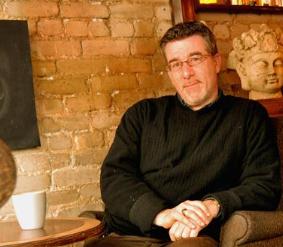Several deputants to the Federal Electoral Boundaries Commission hearing at Metro Hall on Nov 15 told the commission that it is important to maintain the integrity of the Church-Wellesley Village in the face of a proposal to divide the neighbourhood across two federal ridings.
The commission is redrawing the map of federal ridings in Ontario to accommodate 15 additional ridings given to Ontario by recent legislation and population changes according to the most recent census. Toronto is getting two new ridings, including one in the downtown core.
The commission had proposed creating a new riding called Mount Pleasant, which would stretch from Wellesley to Eglinton and from Avenue Road to the Don River. The new riding would include the north half of the Village, while the south half would remain part of Toronto Centre.
The proposal also makes large adjustments to the Trinity-Spadina and St Paul’s ridings and smaller adjustments to Davenport, all to adjust for population growth, especially the rapid growth coming from the condo boom south of Queen Street and along the waterfront.
Many deputants stressed the importance of having the same MP be responsible for the gay community south of Wellesley and the services and institutions north of it, like the 519 Church Street Community Centre and the AIDS Memorial. There was also a desire for the Church-Wellesley BIA and Neighbourhood Associations to be able to deal with a single MP and MPP.
Carolyn Bennett, MP for St Paul’s, told the committee that members of her community are upset about the proposed new Mount Pleasant riding, which is divided geographically by the CPR tracks and the Mount Pleasant cemetery and whose midtown residents would have little in common with the part of the gay village attached to it.
She said several members of her community proposed, instead, creating a new riding along the waterfront, incorporating all the new developments in a single riding, with an MP who would be able to strongly represent issues arising from the rapid growth there. Chopping off Trinity-Spadina and Toronto Centre at the south end would allow the rest of those ridings and St Paul’s to remain relatively intact, and equal in population.
That idea was echoed by Trinity-Spadina MP Olivia Chow and MPP Rosario Marchese, although they differed on where the boundary should be drawn. Chow proposed Front Street and the rail tracks, Bennett proposed King Street, and Marchese proposed Queen or Richmond streets, to include the new developments in the Entertainment District.
The boundary commission seemed to warm to the idea, although some individuals argued that creating a new riding knowing that it will soon outgrow the current population limits is foolish, since the boundaries will need to be redrawn again in 10 years. However, if the waterfront remains a part of Trinity-Spadina and Toronto Centre, the estimated 50,000 people expected to move into the neighbourhood will almost certainly force those ridings to be redrawn in 10 years as well.
Relatively few deputants spoke about Toronto Centre, despite the major changes proposed to the riding. Ward 27 Councillor Kristyn Wong-Tam proposed that if the Mount Pleasant riding is maintained, the border with Toronto Centre should be shifted to either Charles Street or Bloor Street, so the gay village would remain represented by a single MP.
Another proposal would see only the area between Wellesley, Yonge, Bloor and Sherbourne returned to Toronto Centre, while the area west of Yonge as far south as Dundas could be swapped into Mount Pleasant.
Toronto-Danforth MP Craig Scott also requested that the commission maintain the integrity of the gay village in a single riding. Although it’s not his riding, he told the commission it is important to him “as the only out gay MP in Ontario.”
Other ideas proposed by deputants included consolidating all of University of Toronto’s student residence buildings into the Trinity-Spadina riding by adding the residences east of University Avenue, the current border with Toronto Centre.
The boundary commission is hearing submissions around the province before tabling its final recommendations. Those recommendations must then be adopted by Parliament before being used in the next federal election.
Because Ontario’s provincial ridings are defined as being the same as federal ridings, the readjustment automatically affects provincial ridings. The city’s municipal ward boundaries are based on the federal ridings as well, but they don’t automatically adjust with the federal ridings.


 Why you can trust Xtra
Why you can trust Xtra


